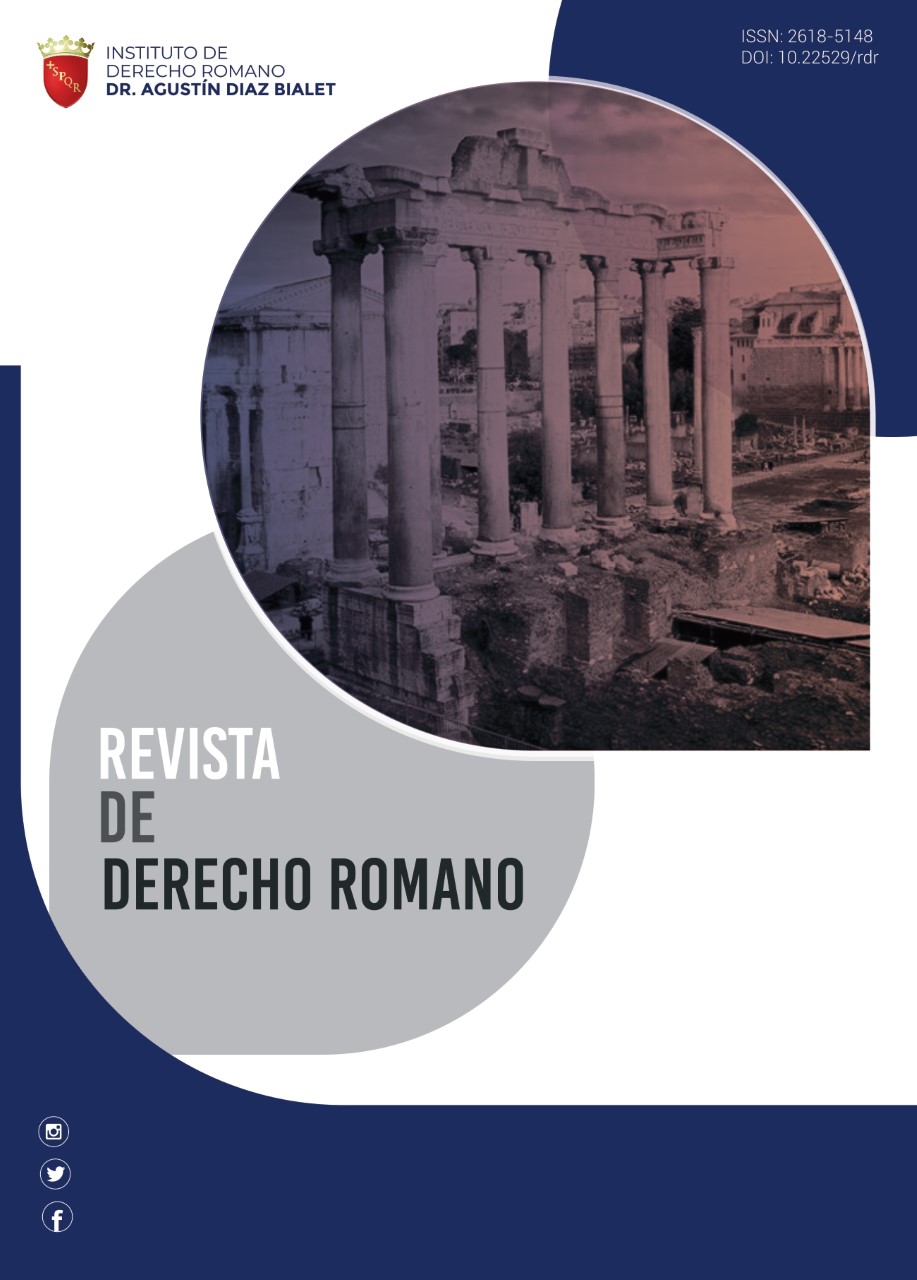Del documento en el derecho romano hacia las herramientas tecnológicas = From the document in roman law towards technological tools
DOI:
https://doi.org/10.22529/rdr.2023(5)06Palavras-chave:
documento, Corpus Iuris Civilis, legislación actualResumo
Para lograr el objetivo propuesto el trabajo se dividirá en dos partes. En la primera parte se analizará la forma en que se celebraban los actos jurídicos de la época arcaica, principalmente la mancipatio, como el negocio per aes et libram más extendido en su uso; la stipulatio, como contrato verbal que deviene en contrato litteris, la aparición de las formas de testar que admitirán se grabe en tablillas la voluntad del testador, principalmente, la mención del nombre del heredero instituido, la utilización de la marca del testador, sello y firma. La utilización cada vez más frecuente de la escritura y la aparición del encargado de efectuar ese trabajo, el tabelión y luego más modernamente la figura del notario, hacedor por excelencia del documento escriturario. Las disposiciones del Corpus Iuris Civilis consagrando la utilización del documento escrito. En la parte segunda, se analizará el fenómeno de la firma digital como resultado de los adelantos tecnológicos y los pasos previos que concluyen con la sanción de las leyes actuales sobre firma digital y documento electrónico y las disposiciones del Código Civil y Comercial de la Nación a ese respecto. ABSTRACT: To achieve the objective, the work will be divided into two parts. In the first part, the way in which legal acts ere celebrated in the archaic era will be analyzed, mainly the mancipatio, as the most widespread business per aes et libram in its use; the stipulatio, as a verbal contract that becames a litteris contract, the appearance of the forms of will that wil allow the will of the testator to be recorded on tablets, mainly the mention of the mane of the instituted heir, the use of the testator´s mark, seal and signature. The increasingly frequent use of writing and the appearance of the person in charge of carrying out that work, the tabelion, and then more modernly the figure of the notary, maker par excellence of the written document. The provisions of the Corpus Iuris Civilis enshrining the use of the written document. In the second part, the phenomenon of the digital signature will be analyzed as a result of technological advances and the previous steps that conclude with the sanction of the current laws on digital signature and electronic document and the provisions of the Civil and Commercial Code of the Nation, that respect.Downloads
Os dados de download ainda não estão disponíveis.
Downloads
Publicado
2023-12-19
Edição
Seção
Artículos
Como Citar
Del documento en el derecho romano hacia las herramientas tecnológicas = From the document in roman law towards technological tools. (2023). Revista De Derecho Romano, 5, 66-90. https://doi.org/10.22529/rdr.2023(5)06








